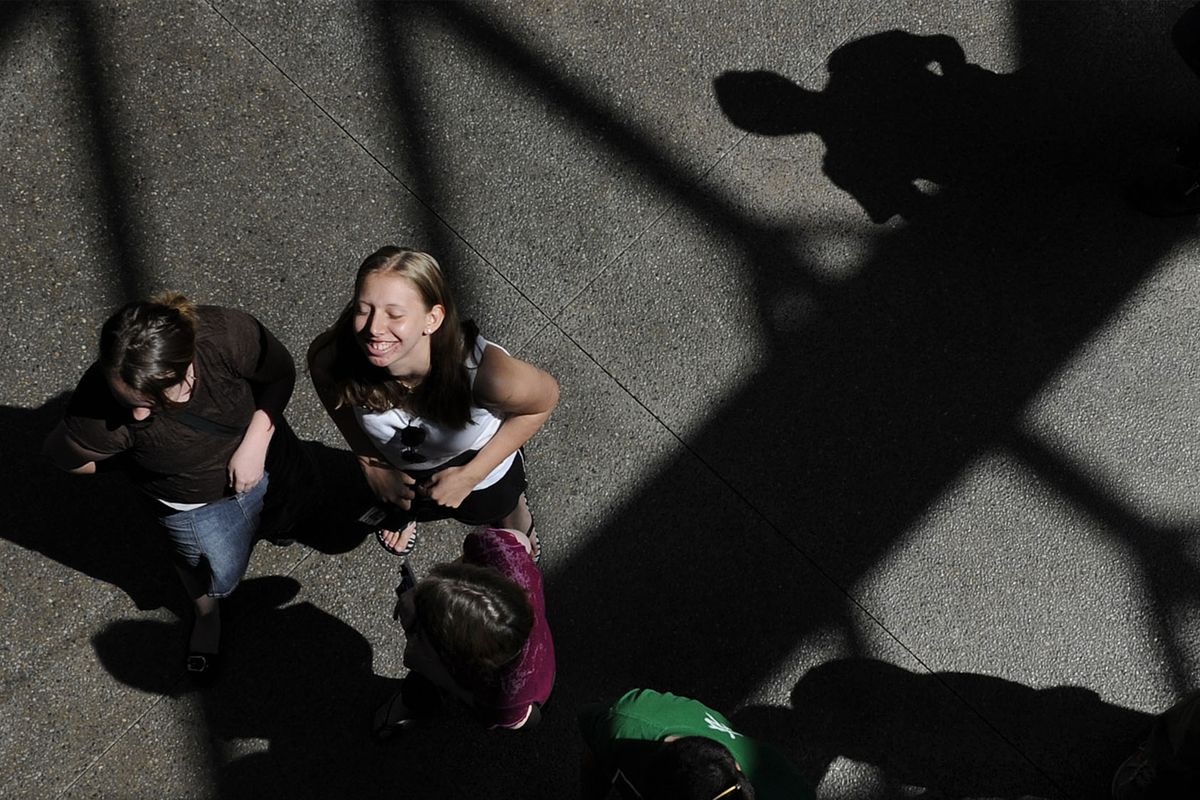CdA colleges expanding
Joint-use building proposed on old mill site

Coeur d’Alene is starting to look like a college town.
Not the type with dorms and dive bars and VW bugs zipping everywhere. But the kind where institutions of higher learning are more prominent than ever, and an alliance of these schools is reaching new heights.
Residents and visitors can’t help but notice the change along Northwest Boulevard, the foyer to downtown. Stylish new signs are the latest addition calling attention to an expanding campus for North Idaho College and its cohorts, the University of Idaho and Lewis-Clark State College.
“We’re growing up,” said Mark Browning, vice president for community relations and marketing at NIC, a two-year community college that sits on ground where the Coeur d’Alene Indians used to fish, feast and dance, and where the U.S. Army later built the sprawling Fort Sherman.
“It’s the appropriate entrance and welcoming to the quality of programs and the quality of experiences and people that you can come and interact with here in Coeur d’Alene,” Browning said.

By taking over a former lumber mill on the north side of NIC, the three schools are now joined in what long has been called an education corridor. It opens up 13 acres for new development, and college and community leaders are starting to map out how that should happen.
With all the infrastructure in place, the former mill site is poised to absorb growth at NIC, which has seen its enrollment swell by 45 percent in the past five years to more than 6,000 students.
The land will bolster NIC’s two-year degree programs and also provide students a seamless transition to upper-division and graduate coursework at the four-year colleges.
“We don’t look at ourselves as competing for these students but serving them together,” said Kathy Martin, Lewis-Clark’s dean for community programs and governmental relations.
The UI and Lewis-Clark each serve more than 400 students in Coeur d’Alene, using space at NIC and inside the Harbor Center, a former hotel along the Spokane River. UI offers 10 undergrad and 10 graduate programs in Coeur d’Alene, ranging from dietetics and nutrition to early childhood development to psychology. Lewis-Clark programs include business, social work, nursing and justice studies.
Boise State University also runs a social work graduate program at the Harbor Center, and Idaho State University administers online classes in health services there.
The improvements help raise the profile of the schools and underscore the fact that local residents can have a complete higher education experience, from associate to doctoral degrees, without venturing far from home.
“We’re thrilled with the project. I think it’s really a showpiece for the city,” said Charles Buck, who manages UI facilities in Coeur d’Alene, Post Falls and Sandpoint.
“I think it’s kind of turned an idea that maybe it would just be a way to get from one point to another into a project that really has enabled a vision for a broader campus that can serve higher education needs for everyone,” Buck said.
Crews this spring are putting the final touches on the first phase of the redevelopment of the former DeArmond Mill site through a partnership of NIC, the city and the Lake City Development Corporation, which manages Coeur d’Alene’s urban renewal districts.
At a cost of $3.7 million, the area has been transformed to include new streets and roundabouts, sidewalks and landscaping, ample public art and new access to the Spokane River. It also provides prominent new entrances to the campus at Hubbard and River streets, which should reduce traffic in the Fort Grounds residential neighborhood sandwiched between NIC and City Park.
What comes next is a burning question.
“That’s really the challenge now, is to figure out what we put on the space that’s available,” Browning said. “What types of buildings are needed, what’s the best use of that space, how do we incorporate the need for parking and the flow of students and the public?”
The three schools have proposed a joint-use building that combines classrooms with student services such as admissions, financial aid and academic advising. The three-story, 45,000-square-foot building would cost an estimated $12 million, and the colleges propose paying a third of that if the state agrees to pick up the rest.
Classroom space is the top need for Lewis-Clark, which has used portable buildings for instruction and will share classrooms with the UI starting next fall. Finding empty classrooms in the daytime has been difficult, LCSC Interim Director Rocky Owens said.
The old mill land also is one site under consideration for NIC’s top construction priority – a new home for the school’s burgeoning professional-technical programs. The college is considering several other locations in the county as well.
Also on the drawing board is a longhouse in conjunction with the Coeur d’Alene Tribe to showcase the culture and heritage of the area’s native people.
“A lot of plates are spinning in the air trying to figure out what to do,” Browning said. “And how do you fund it? How do you set yourself … on the right course for the next 25 or 30 years to meet the needs of the students and community, but you don’t overburden everyone with the cost of doing it?”